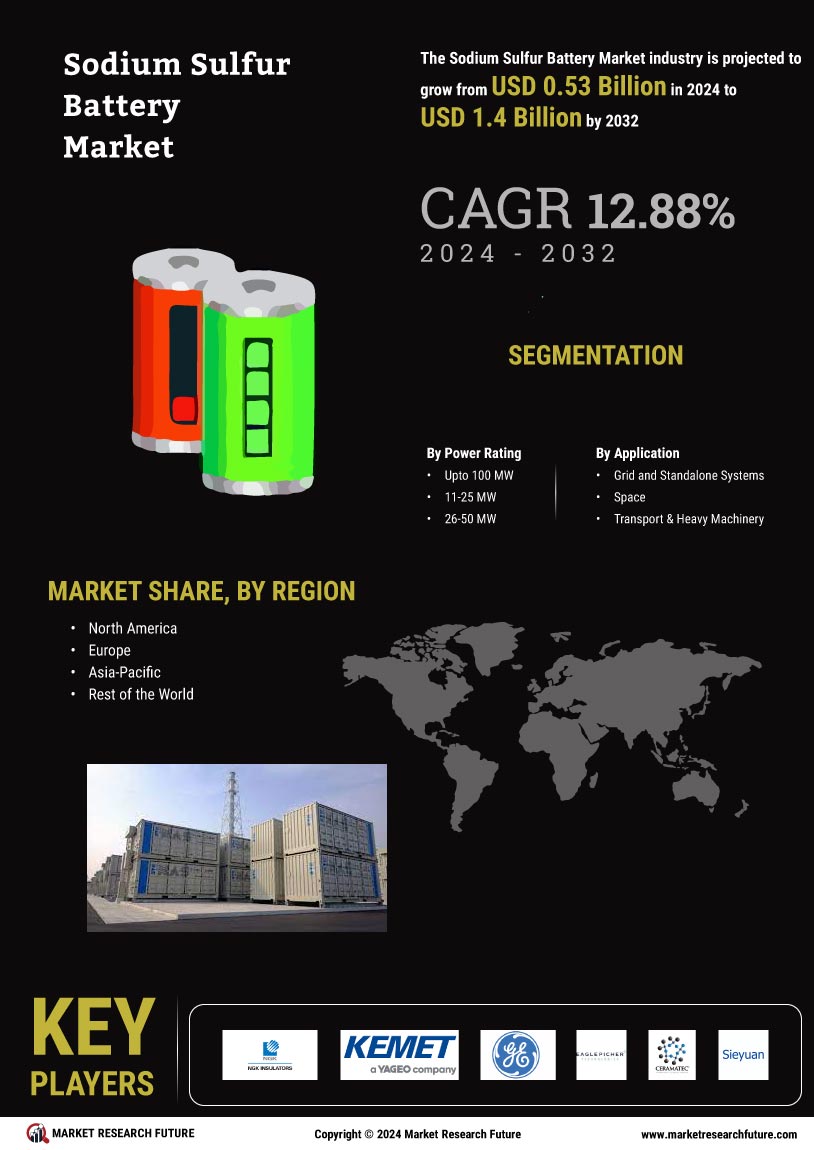Market Growth Projections
The Global Sodium Sulfur Battery Market Industry is projected to experience substantial growth over the next decade. With a market value of 0.53 USD Billion in 2024, it is anticipated to expand to 2.01 USD Billion by 2035. This growth trajectory suggests a compound annual growth rate of 12.9% from 2025 to 2035. Such projections indicate a strong market potential driven by various factors, including technological advancements, increasing demand for renewable energy storage, and supportive government policies. The anticipated growth reflects the evolving landscape of energy storage solutions and the critical role sodium sulfur batteries are expected to play in the future.
Rising Electric Vehicle Adoption
The increasing adoption of electric vehicles (EVs) is contributing to the growth of the Global Sodium Sulfur Battery Market Industry. As the automotive sector shifts towards electrification, the demand for high-performance batteries is escalating. Sodium sulfur batteries, with their ability to deliver high energy density and rapid charging capabilities, are being explored as potential solutions for EV applications. This trend is likely to create new opportunities for manufacturers and investors in the sodium sulfur battery market. The integration of these batteries into EVs could further enhance their market presence and drive technological advancements in the coming years.
Growing Demand for Renewable Energy Storage
The Global Sodium Sulfur Battery Market Industry is experiencing a surge in demand driven by the increasing need for efficient energy storage solutions. As countries worldwide strive to transition to renewable energy sources, sodium sulfur batteries are emerging as a viable option due to their high energy density and long cycle life. In 2024, the market is projected to reach 0.53 USD Billion, reflecting a growing recognition of the technology's potential. This trend is expected to continue, with the market anticipated to expand significantly as more renewable energy projects come online, thereby enhancing the role of sodium sulfur batteries in energy management.
Supportive Government Policies and Incentives
Government initiatives aimed at promoting clean energy technologies are significantly influencing the Global Sodium Sulfur Battery Market Industry. Many nations are implementing policies that provide financial incentives for the development and deployment of energy storage solutions, including sodium sulfur batteries. These policies often include subsidies, tax breaks, and grants that encourage investment in renewable energy infrastructure. As governments recognize the importance of energy storage in achieving sustainability goals, the market is likely to benefit from increased funding and support. This favorable regulatory environment is expected to drive growth and innovation within the sodium sulfur battery sector.
Challenges in Lithium-Ion Battery Supply Chain
The Global Sodium Sulfur Battery Market Industry is positioned to benefit from the challenges currently facing the lithium-ion battery supply chain. Issues such as raw material shortages and geopolitical tensions are prompting manufacturers and energy providers to seek alternative battery technologies. Sodium sulfur batteries offer a compelling solution due to their abundant raw materials and lower environmental impact. As stakeholders look for reliable and sustainable energy storage options, sodium sulfur batteries may gain traction as a preferred choice. This shift could lead to increased investment and development within the sodium sulfur battery sector, further solidifying its market position.
Technological Advancements in Battery Efficiency
Technological innovations are playing a pivotal role in shaping the Global Sodium Sulfur Battery Market Industry. Recent advancements in materials and manufacturing processes have led to improvements in battery efficiency and performance. Enhanced thermal stability and energy density are making sodium sulfur batteries more attractive for large-scale applications, particularly in grid storage. As these technologies evolve, they are likely to reduce costs and increase adoption rates. The market is expected to grow from 0.53 USD Billion in 2024 to an estimated 2.01 USD Billion by 2035, indicating a robust compound annual growth rate of 12.9% from 2025 to 2035.













